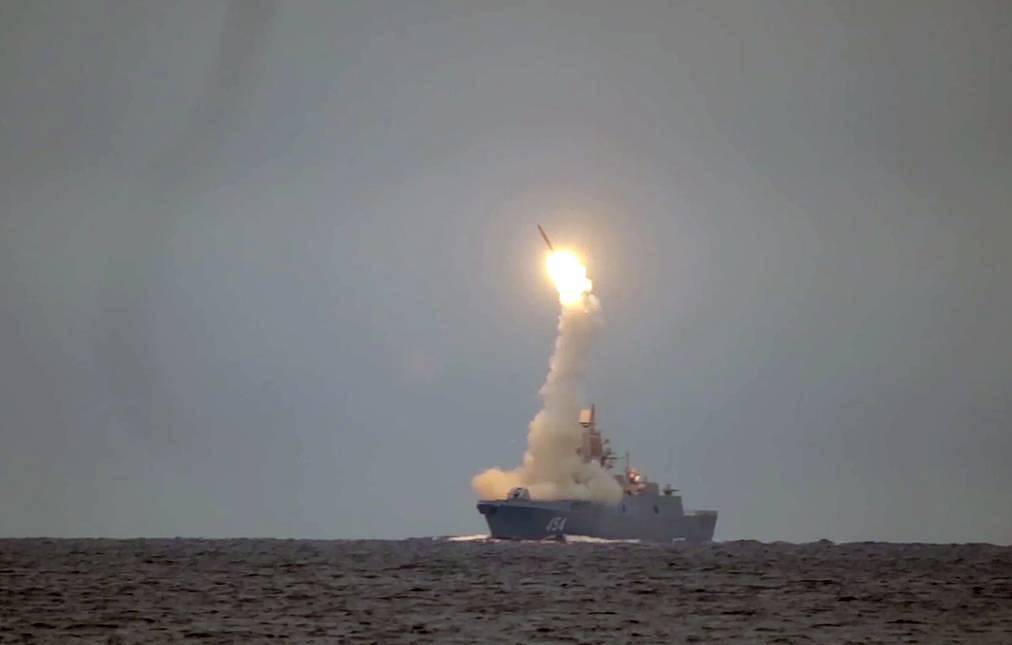The state-of-the-art Tsirkon hypersonic missile is set to enter service with surface ships of the Russian Navy in September this year. The breakthrough Tsirkon weapon was earlier expected to become operational in the Russian Navy by the end of 2022. Tsirkon hypersonic missile based in the town of Reutov in the Moscow Region (part of Tactical Missiles Corporation). In his State-of-the-Nation Address to the Federal Assembly in February 2019, Russian President Vladimir Putin said that the Tsirkon was capable of developing a speed of about Mach 9 (nine times the speed of sound) and its striking range capability could exceed 1,000 km. The breakthrough Tsirkon weapon was earlier expected to become operational in the Russian Navy by the end of 2022.
The 3M22 Tsirkon (NATO reporting name: SS-N-33) is a scramjet powered maneuvering anti-ship hypersonic cruise missile currently in production by Russia. Zircon is believed to be a maneuvering, winged hypersonic cruise missile with a lift-generating center body. A booster stage with solid-fuel engines accelerates it to supersonic speeds, after which a scramjet motor with liquid-fuel (Decilin) (JP-10 jet fuel) in the second stage accelerates it to hypersonic speeds. The missile’s range is estimated to be 135 to 270 nautical miles (155 to 311 mi; 250 to 500 km) at low level, and up to 400 nmi (460 mi; 740 km) in a semi-ballistic trajectory; average range is around 400–450 km (250–280 mi; 220–240 nmi).

On August 24, 2021, a contract was signed at the Army 2021 international arms show on the delivery of Tsirkon hypersonic missiles to Russia’s Defense Ministry. President Putin announced on December 24, 2021 that the Tsirkon hypersonic missile system had conducted a salvo launch and the tests had been held “successfully and impeccably.” It was reported in the fall of 2021 that Russia began the first tests of the Tsirkon hypersonic missile from an underwater carrier, the nuclear-powered submarine Severodvinsk. On May 28 this year, a Tsirkon hypersonic missile was test-fired to the longest possible range, wrapping up the weapon’s state trials from a surface carrier, the Northern Fleet’s frigate Admiral Gorshkov.
The high speed of the Zircon likely gives it better target-penetration characteristics than lighter subsonic cruise-missiles, such as Tomahawk. Being twice as heavy and almost eleven times as fast as Tomahawk, the Zircon has more than 242 times the on-cruise kinetic energy of a Tomahawk missile (?9 gigajoules, or equal to 2,150 kg TNT explosive energy). Its Mach 5-9 speed means that it cannot be intercepted by existing missile defence systems and its precision makes it lethal to large targets such as aircraft carriers. Zircon can travel at a speed of Mach 5 – Mach 9 (3,800–6,900 mph; 6,100–11,000 km/h; 1.7–3.1 km/s). This has led to concerns neutrality is disputed that it could penetrate existing naval defense systems.














